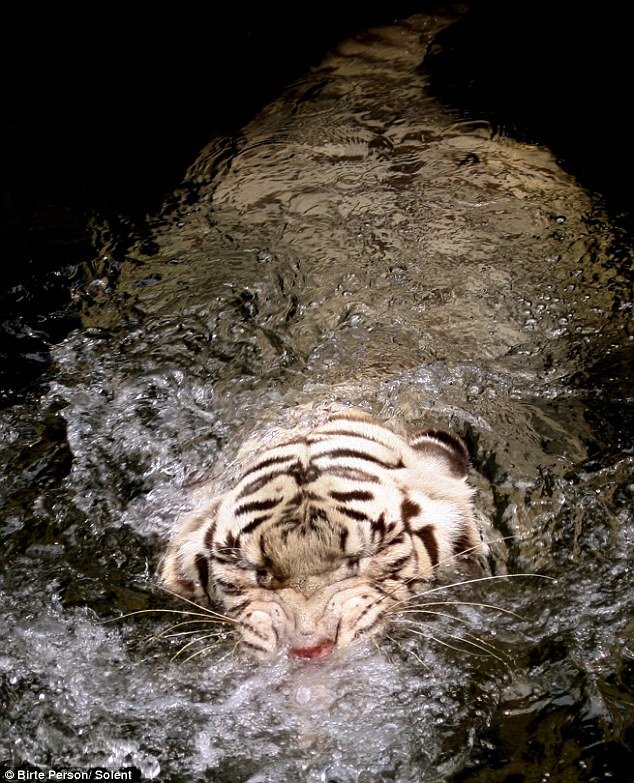|
|
Tiger In The Water
|
Large male Siberian Tigers (Panthera tigris altaica) can reach a total length of 3.5 m "over curves" (3.3 m. "between pegs") and a weight of 306 kilograms,. This is considerably larger than the sizes reached by island-dwelling tigers such as the Sumatran, the smallest living subspecies, with a body weight of only 75–140 kg. Depending upon subspecies tigers may be 1.4-2.8 m (4.6-9.2 ft) long from along the head and body, while the tail may add a further 0.6-1.1 m (2-3.6 ft). At the shoulder, tigers may variously stand 0.7-1.2 m (2.1–4 ft) tall.
Tigresses are smaller than the males in each subspecies, although the size difference between male and female tigers tends to be more pronounced in the larger subspecies of tiger, with males weighing up to 1.7 times more than the females. In addition, male tigers have wider forepaw pads than females. Biologists use this difference to determine gender based on tiger tracks. The skull of the tiger is very similar to that of the lion, though the frontal region is usually not as depressed or flattened, with a slightly longer postorbital region. The skull of a lion has broader nasal openings. However, due to the amount of skull variation in the two species, usually, only the structure of the lower jaw can be used as a reliable indicator of species.
Tigers have round pupils and yellow irises (except for the blue eyes of white tigers). Due to a retinal adaptation that reflects light back to the retina, the night vision of tigers is six times better than that of humans.
|
|









